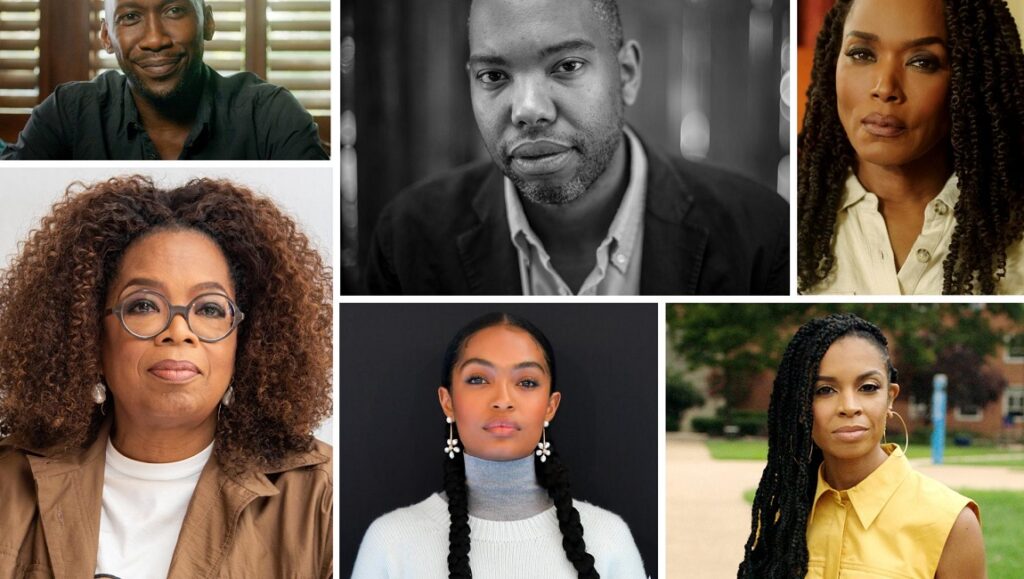Between the World in Me capitalizes on the power and poetry of Ta-Nehisi Coates’ words but contributes considerably less as a visual document.
Published in 2015, Ta-Nehisi Coates’ Between the World and Me is a monumental literary achievement. A nonfiction epistle that functions as part memoir, part short-form ethnographic biography, and a righteous, absolute obliteration of the myth of American moral character, the work is also, crucially, an update and contemporaneous response to James Baldwin’s seminal The Fire Next Time. While the two “letters” were written in different epochs — Baldwin’s in the midst of the early ‘60s Civil Right Movement and Coates’ following the ignominious 2015 Ferguson acquittal, a moment that forecasted America’s renewed commitment to law enforcement at the expense of Black lives and in the face of mounting cultural unrest — a close reading reveals precious little difference in the unjust worlds sketched by the two authors. The essential difference, then, is that Baldwin’s survey boasts a vein of hope amidst the flurry of incisive critique while Coates instead views racism as an unshakeable and insurmountable American truth.
And so, when a film adaptation of Coates’ work was announced (technically a cinematic treatment of the book’s 2018 stage adaptation), a few puzzling questions immediately emerged. How could his poetic language and essayistic attention translate to a medium not conducive to either distinctly linguistic element? How could the author’s warranted but indisputably bleak perspective be conveyed to a post-George Floyd and Breonna Taylor public hungry and mobilized for change without feeling fatalistic? Director Kamilah Forbes’ new film adaptation answers some of these questions more successfully than others. One thing that certainly works is the performative, not merely recitative, mode in which Ta-Nehisi Coates’ words are delivered: the film version lifts the book’s early passages, utilizing a quick litany of actors to each deliver brief snippets of Coates’ context and explanation to his son (whom the original text is written to) about the why of his writing. It’s a gambit that works for several reasons. The strength of Coates’ language is tough to match in the literary realm, let alone the cinematic one, and in the way of all great poetry, old ideas take new shape and generate new power when wrought by such a craftsman. The opening move also smartly established the level of remove needed to universalize Coates’ text: for the film to work as more than memoir, it’s important to establish the dissonance of seeing various faces, ages, and genders address “my son” and communicate stories specific to Coates’ experience but familiar to any number of people. And, perhaps most critically for a film (and book) so focused on the Black body, the Black performers who deliver these mini-monologues create a sense of pure community, which gives the film a certain emotional potency. It may at first feel strange that Coates himself doesn’t arrive until the film’s waning moments, but in a country that so egregiously denies autonomy of body — the very least that birth should grant a person — and keeps Black bodies under constant siege, the decision to expand the film’s imagistic and personal scope feels crucial.
After this opening, Between the World and Me continues to utilize actors to express some of the book’s most moving sections: Susan Kelechi Watson delivers a segment about Howard University (“Mecca,” to Coates) in fluid walk-and-talk fashion, while Phylicia Rashad offers an extended account of one of the author’s friends who was murdered by police in his college years. (The latter is a powerful narrative in its own right, but it’s no surprise, in the year of ACAB, that it would be a chosen feature in this film.) And, of course, it’s a treat to watch Black Thought apply his nimble cadence to Coates’ accusatory language. Less formally successful is the rest of the film’s assemblage approach, mixing in archival footage — largely set to alternating hip hop tracks and melancholic lounge twinkling — with a few of the best hits of viral white racism in 2020. While there’s some delirious pleasure to be found in endlessly blasting the faces of Klan-adjacent dirtbags on as many platforms as possible, the move feels beneath the rest of the film’s moving emotionalism, gauchely tacked on as a desperate bid for relevance.
In fact, in general, the images simply feel haphazardly constructed; Coates’ words tell a story but the visuals rarely do, their slapdash inclusions offering little in the way of a logical progression. In his way, Coates is a prose lyricist, a documentarian, and a philosopher, and it’s a boon to the film that his linguistic power helps to transcend these frequent formal limitations and the incoherent marriage of word and image. Elsewhere, the film only hints at other potent thematic territory, like capitalism’s inextricable and insidious relationship to racial injustice, a structural choice that disappoints even as it admittedly keeps the film’s concerns focused. But the film is ultimately defined by, and benefits from, its righteous fury and commitment to reflecting an accurate portrait of America’s wicked racist character, implicitly disavowing such pandering, dipshitted neoliberal claptrap as Oscar winners like Green Book or Crash. It’s an admittedly low bar, and Forbes’ film indeed pales when considered alongside recent documentaries charting similar thematic territory: I Am Your Negro better tethers its literary fundament to its formal choices while something like Field Niggas utilizes an impressionistic mosaicism in its construction. And so, while Between the World and Me is no classic of documentary filmmaking or even much successful as a visual document, in taking to task a broken system and celebrating Black bodies and voices, it at least justifies its existence as a valuable contribution to necessary discourse and a shift in representation.
You can watch Kamilah Forbes’ Between the World and Me live on HBO at 8:00 PM EST on November 21 or stream in On Demand beginning on November 22.


Comments are closed.